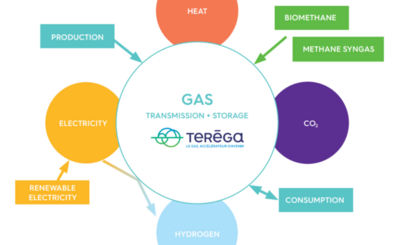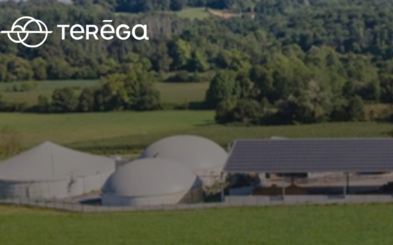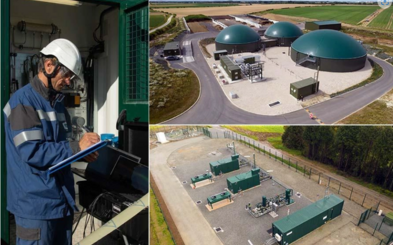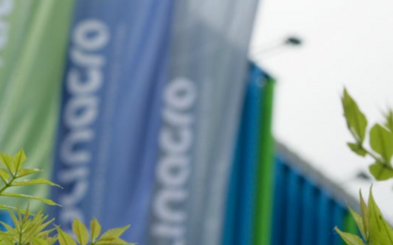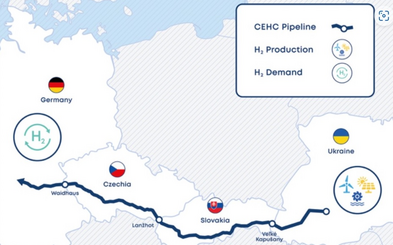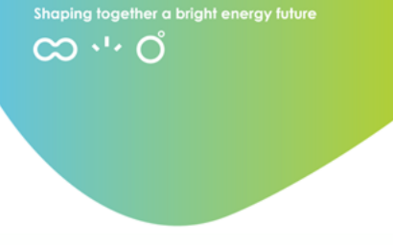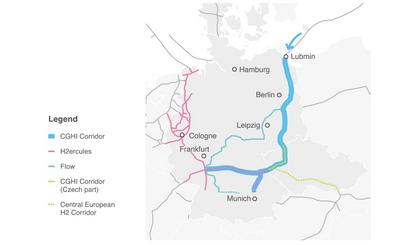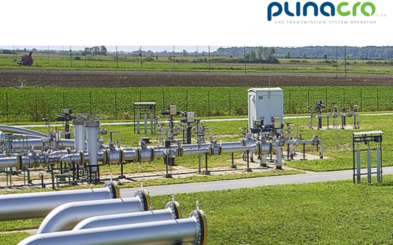INNOVATIVE PROJECTS PLATFORM
To efficiently build on its Members' actions to promote or contribute to innovative technologies, regulation and business models, and partnerships across the value chain, ENTSOG has created the Innovative Projects Platform to map TSOs’ projects and partnerships on Research, Development and Innovation (RDI) activities for the energy transition.
This public platform provides information and links to enable exchange of best practices applied at national level and in some cases, across borders through partnership efforts.
These innovative solutions focus on topics such as repurposing infrastructure for renewable gases and projects for hydrogen, CCS and CO2 transport, biogas, energy system integration. These innovative applications support the achievement of the current EU goals of reducing GHG emissions and reaching the decarbonisation goal of net-zero by 2050.
*Disclaimer: The content published on this page is information owned by TSOs and not by ENTSOG. It is therefore published on behalf of TSOs. Please note terms and conditions of use of the website (including article 7) are fully applicable to this page.
Technology
Discover here how technologies can optimise the usage of the grid, make digital layer connections and support decarbonisation of the EU gas system. Technology R&D has a vital role in the energy transition. ENTSOG Members (TSOs) are developing new and innovative technologies to offer sustainable solutions for the gas sector.
Regulation & Business Model
Stay informed on how ENTSOG Members (TSOs) engage in development of the new energy products and services to foster uptake of renewable and decarbonised gases into the grid.
Partnership
Look at new partnerships and initiatives formed by ENTSOG’s Members (TSOs). They are actively working together as well as with various stakeholders on projects aimed at decarbonisation of the gas sector and of the whole EU economy.
Hydrogen
Hydrogen is a gas under standard conditions and there are also different hydrogen derivatives, such as ammonia and synthetic electrofuel. sHydrogen can be produced from diverse process technologies, such as electrolysis and steam-methane reforming (with or without carbon capture and permanent storage of this carbon to reduce emissions).
Repurposing for Renewable Gases
Repurposing of pipelines for renewable gases transport (e.g. hydrogen) is a cost effective way to meet decarbonisation goals and can be undertaken without compromising the ability of the natural gas network to ensure security of supply.
Biogas
Biogas is obtained via the anaerobic decomposition of the organic matter. After the process of upgrading, biogas becomes biomethane with the same quality standard as natural gas and can be transported via the existing grid infrastructure.
CCS and CO2 Transport
Carbon Capture and storage is the process of capturing CO2 from a set of possible sources, such as for example fossil fuel power plants, transporting it to a storage site, and depositing it underground on a permanent basis. The aim is to prevent the release of CO2 into the atmosphere.
Energy System Integration
Integrated infrastructure planning for electricity and gases is essential to support the decarbonisation of the energy system sector, particularly for facilitating the transport of renewable gases like hydrogen.
CNG
Compressed Natural Gas (CNG) is a fuel source that is made from compressing natural gas to less than 1% of its standard atmospheric volume. CNG combustion produces fewer climate-impacting gases than other fossil fuels.
Digitalisation
Digitalisation can bring various benefits to day-to-day operations such as enhanced control over the gas quality and cost reductions. TSOs look at data-driven solutions to boost performance, efficiency and competitiveness.
Heating & Cooling
Cutting the energy consumption in heating and cooling in buildings and industry can be achieved through various technologies. TSOs are working on developing cost-efficient solutions for the decarbonisation of this sector.
Certification of green gases
To ensure the cross-border scale up and tradability of renewable, decarbonised and low-carbon gases. This can be achieved via pan European Guarantees of Origin and Certification Schemes.
Teréga
Impulse 2025
IMPULSE 2025 project aims at implementing a smart multi-energies system to interconnect different energy networks (gas, power, heat) to create synergies and improve energy efficiency. It includes studies and the building of a pilot demonstrator. 2 phases: Phase 1 (2019-2024) development of a model and optimization tool to identify the optimal configuration of a smart multi-energies system. Phase 2 (post 2025) study of the operational feasibility to confirm estimated gains.
Contact: jordan.perrin@terega.fr
Teréga
Biomethane connection of production units
The scattered production of renewable gas will take an increasing part in the gas mix. Grid adaptations and extensions will be required to connect these production units to the transmission network. These network upgrades will maximise the volume of biomethane injected into the gas system and reach the national target for renewable gas (15% of gas consumption in 2032). Teréga expects 3 to 5 connection projects per year (around 40 completed by 2032) for an estimated production of 1,6 TWh/year.
Contact: jordan.perrin@terega.fr
GRTGaz
Reverse flow projects
Network adaptations will enable to maximize the volume of biomethane injected into the gas system and reach european target for renewable gas production set by Repower EU. Grid extensions will be required to collect this generation and backhaul facilities will allow the excess energy to be absorbed when supply exceeds local demand. It can be estimated that around 162 backhaul installations and mutualised compressors −90% in D/T (Distribu-tion/Transmission) and 10% in T/T (Regional Transmis-sion/Principal Transmission infrastructures)− would be re-quired, i.e. a financial envelope of €479 million by 2030.
PLINACRO Ltd.
OSIJEK aquifer CO2 transmission
The location and the capacities of CO2 storing enable, if proven to be economically justified, receiving and storing of CO2 from the neighbouring EU countries (SLO, HU) and Energy Community countries (SER, B&H). Project enable the collecting and receiving CO2 from the Slavonski Brod and Osijek area for storing in the Osijek aquifer and in the depleted oil and gas field in that area.
Contact: PLINACRO
Snam, TAG, Eustream, NET4GAS, OGE
SunsHyne Corridor
SunsHyne Corridor is a strategic infrastructure initiative that will enable the transport of green hydrogen, mainly via repurposed pipelines, from production areas in North Africa to demand centres in Central Europe. Five leading European gas transmission system operators - Snam, TAG, Eustream, NET4GAS and OGE - are working together to implement till 2030 this important segment of 3400 km length of the European Hydrogen Backbone. The SunsHyne Corridor enables supply to high-demand centres in Central Europe all along the route.
Contact: karin.stehlik@net4gas.cz
Gas Networks Ireland
Hydrogen Integration
GNI is preparing for the integration of hydrogen into the existing natural gas system through the development of dedicated hydrogen networks at strategic clusters and the preparation of the existing network to accept blends of hydrogen. The Irish national hydrogen strategy published in July 2023 identifies that although blending of hydrogen and biomethane is unlikely to be an enduring end use for hydrogen produced in Ireland it could provide a route to market for the first phase of hydrogen production projects as well as recognising that hydrogen blends will enter Ireland through the interconnectors to Great Britain if the UK begin to blend into their natural gas network.
GTSOU, EUSTREAM, NET4GAS, OGE
The Central European Hydrogen Corridor (CEHC)
The Central European Hydrogen Corridor (CEHC) aims to create a hydrogen “highway“ in Central Europe for transporting hydrogen from major hydrogen supply areas in Ukraine to hydrogen demand clusters in Germany. The hydrogen corridor will also enable hydrogen transport between hydrogen production facilities and hydrogen consumers in the Czech Republic and Slovakia. With an initial technical capacity of 144 GWh/d, the project aims to transport green hydrogen as of 2030.
Contact: karin.stehlik@net4gas.cz
Fluxys
Belgian CO2 Transmission Facilities
Fluxys intends to roll out the necessary CO2 transmission infrastructure including pipeline interconnections between clusters and CCUS hub. Development will start with local pipeline networks in different clusters, further extended in function of the need to progressively give access to CO2 transmission infrastructure to all industry that would require it. The carbon clusters and backbone development also foresees possible interconnections with neighbouring systems, interconnection with adjacent networks in Germany, France and The Netherlands.
GASCADE, NET4GAS, OGE
The Czech German Hydrogen Interconnector (CGHI)
The vision of the Czech German Hydrogen Interconnector (CGHI) initiative is to create a hydrogen interconnector to connect high potential hydrogen supply areas in Northern Germany and Baltics with expected high demand clusters in the EU (predominantly in South Germany and North Bohemia). Additionally, it will also enable connection of local suppliers and consumers along the corridor.
Contact: karin.stehlik@net4gas.cz
PLINACRO Ltd.
DRAVA aquifer CO2 transmission
Besides directly reducing the CO2 emission, the project will also enable CO2 neutral production of H2 in a transitional period until the full decarbonisation is achieved when the production of H2 will be carried out entirely from the renewable energy through electrolysers. The location and the capacities of CO2 storing enable, if proven to be economically justified, receiving and storing of CO2 from the neighbouring EU countries (SLO, HU) and Energy Community countries (SER, BH). Project enable the collecting and receiving CO2 from the Varaždin and Virovitica areas for storing in the Drava aquifer and in the depleted oil and gas fields in that area.
Contact: PLINACRO








